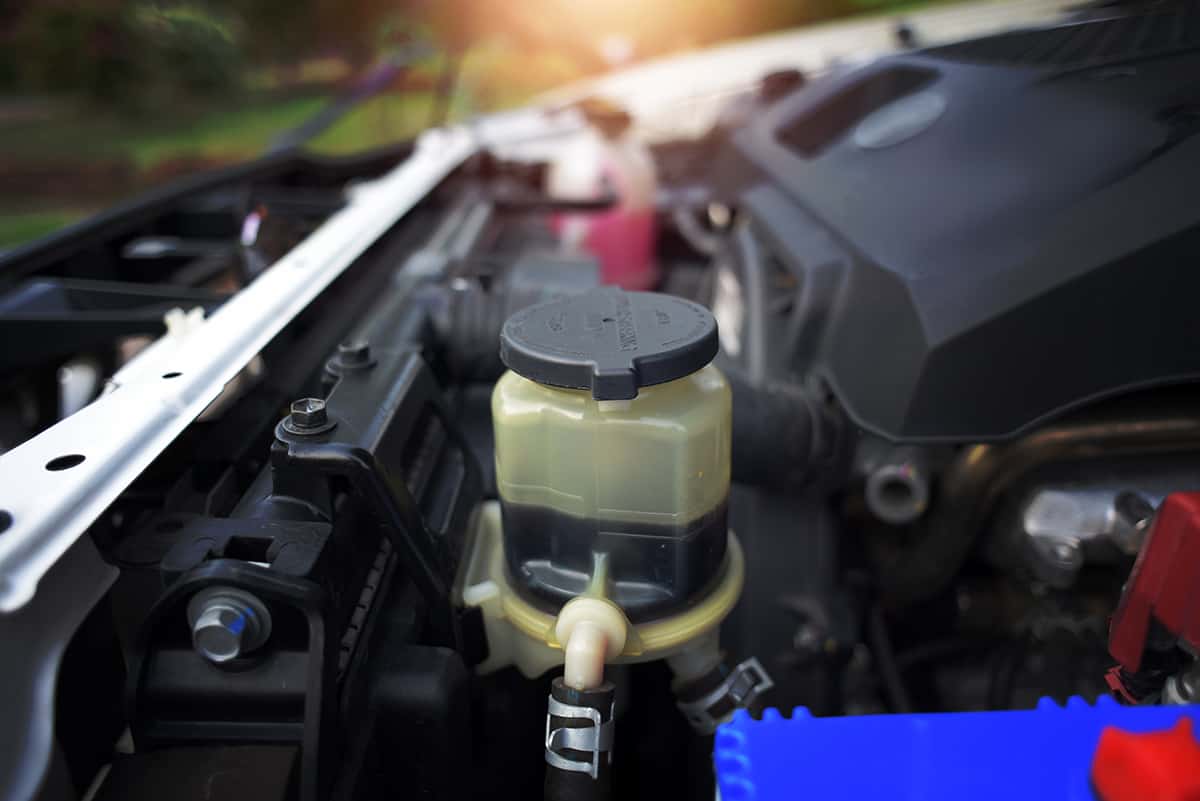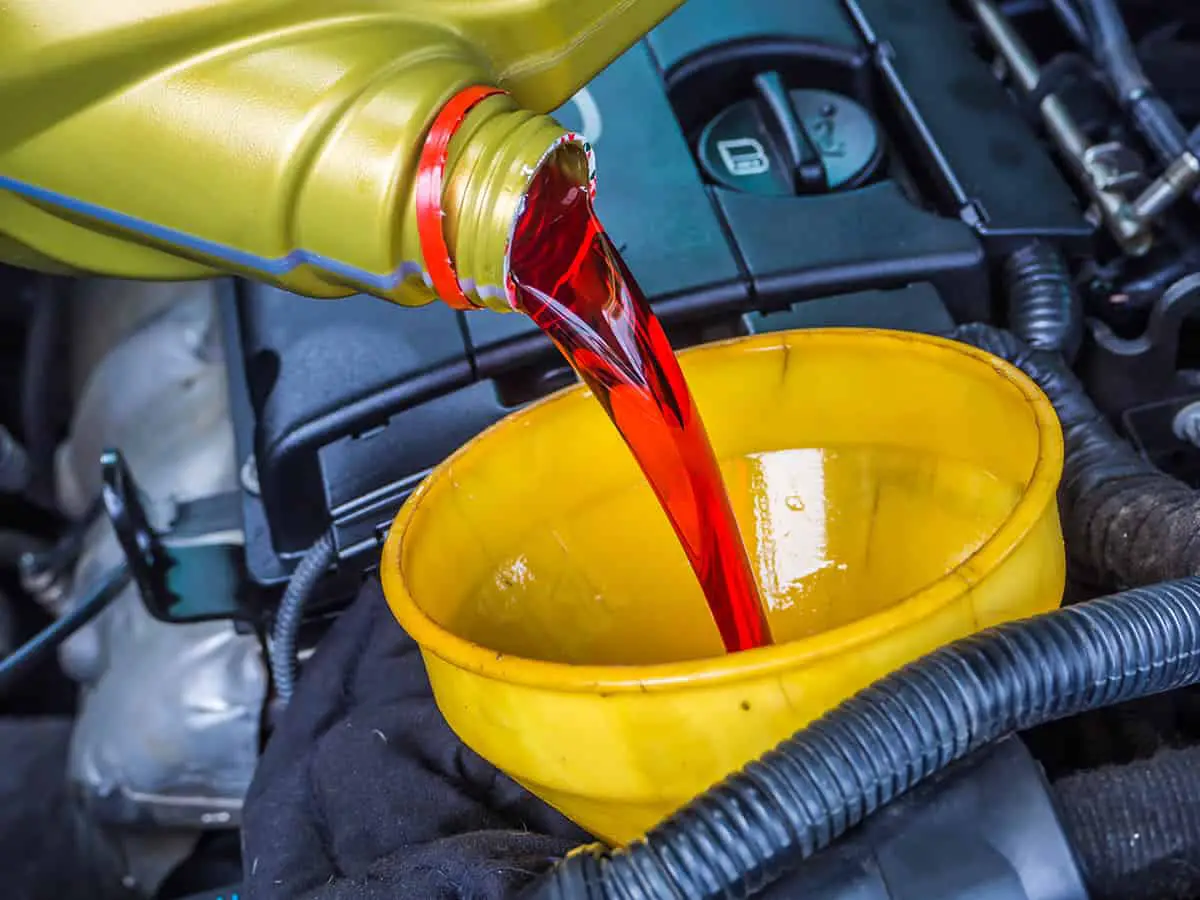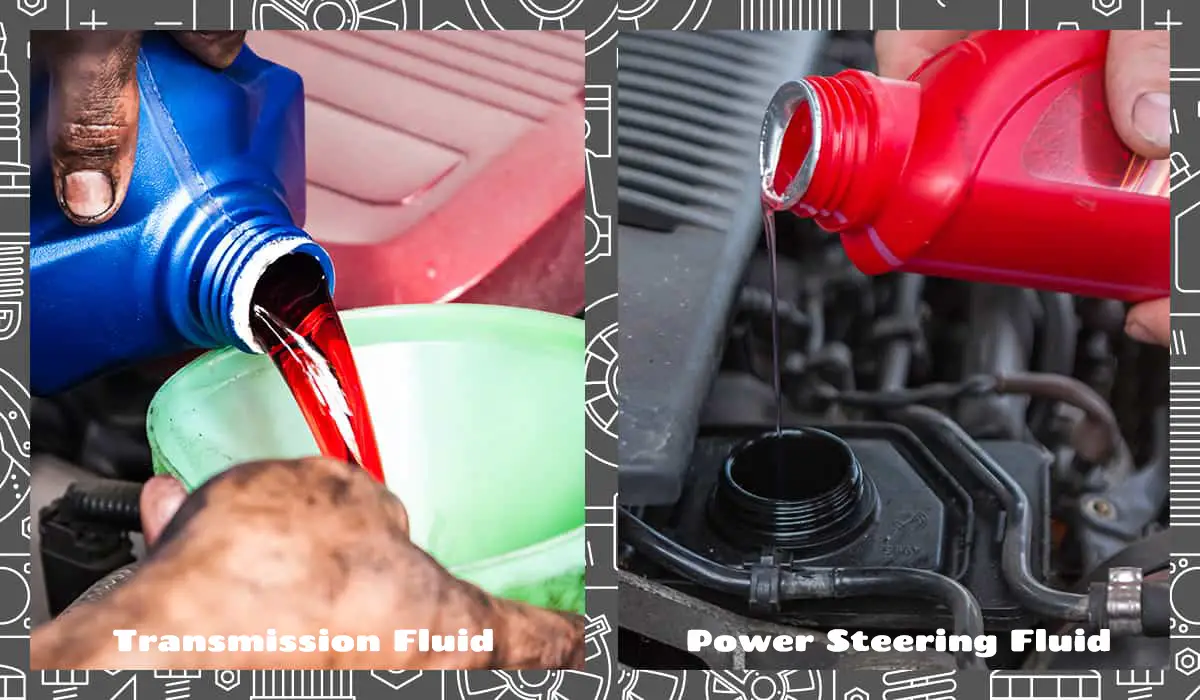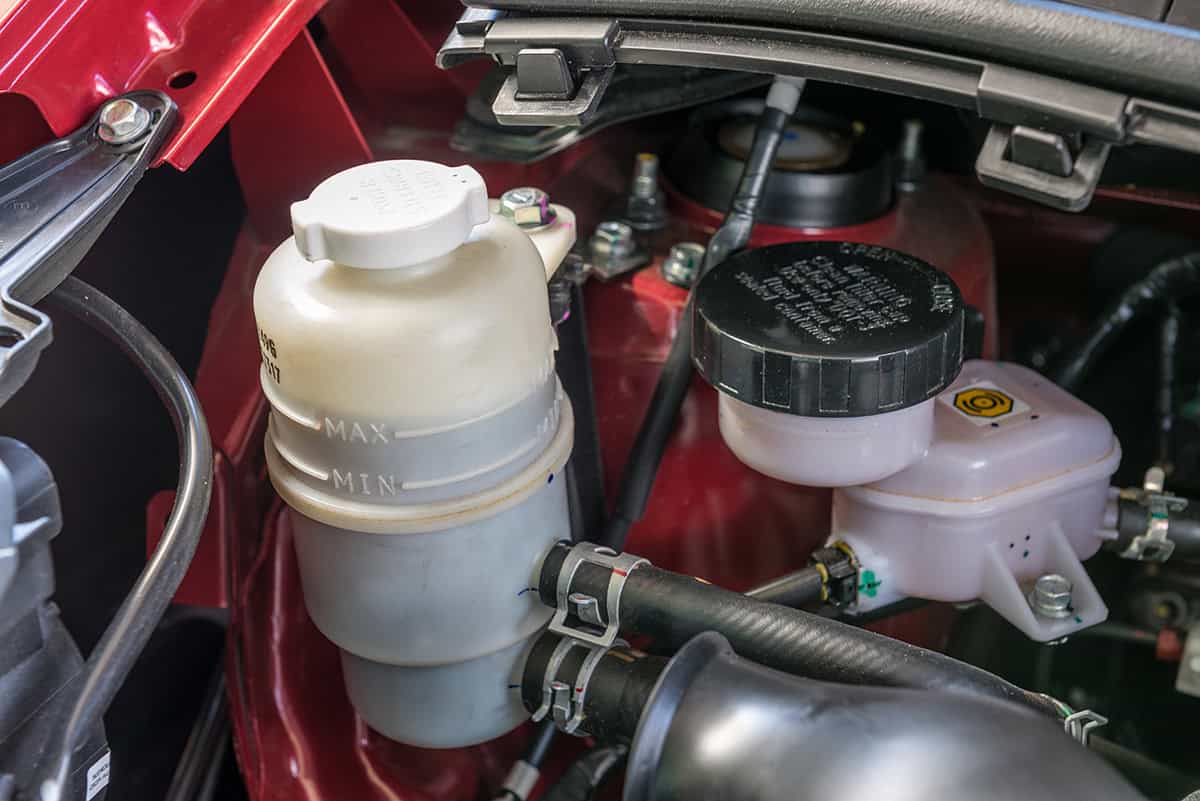Cars require different types of fluids. One of the vital fluids in a car is the power steering fluid, while another crucial one is the transmission fluid. These fluids are essential to the car’s health, making the drive smooth and trouble-free. But what are these fluids, and what do they do? Are they the same or different?
Power steering fluid makes steering your car easier. It’s part of a system that helps turn the car’s wheels smoothly. Transmission fluid is used in the transmission system, where it lubricates gears and keeps them from overheating. Power steering fluid and transmission fluid are not the same and should not be used interchangeably.
In this article, we’ll discuss what power steering and transmission fluids are, their roles, and how they differ.
What is Power Steering Fluid?

Power steering fluid is a type of hydraulic fluid. ‘Hydraulic’ means it uses liquid to transmit power or make something move. So, in this case, power steering fluid carries power from the steering wheel to the steering mechanism of your car, allowing you to turn with ease.
The Role of Power Steering Fluid in Your Vehicle
Power steering fluid makes steering your car a piece of cake. When you turn the steering wheel, this fluid helps move the parts that turn your wheels. Without power steering fluid, you would need a lot more muscle to steer, especially while moving slowly or parking.
Here’s what power steering fluid does in your vehicle:
- Lubricates: Power steering fluid lubricates the components of the power steering system, reducing friction and wear.
- Transmits power: This fluid carries the force from your steering wheel to the steering gear that turns the wheels.
- Protects: Power steering fluid shields the power steering system from corrosion. It also helps to keep the system cool by carrying heat away.
Signs of Low Power Steering Fluid
Your car’s power steering system shows signs when it’s running low on fluid:
- Hard steering: It becomes more challenging to turn the steering wheel, especially at slower speeds or when parking.
- Noisy steering: You might hear a whining or moaning noise when you turn the steering wheel.
- Vibrating steering wheel: The steering wheel might vibrate or feel jerky while turning.
- Leakage: You may find a puddle of power steering fluid under your car.
The World of Transmission Fluid

Transmission fluid is a special kind of oil made specifically for the transmission system in your car. The transmission system includes parts like gears and clutches that need constant lubrication to function well and not wear out.
Think of the transmission fluid as the oil that keeps the gears in a clock working without grinding against each other. It helps in smooth gear shifts, whether your car is an automatic or a manual.
The function of Transmission Fluid in Your Car
The transmission fluid in your car has several important functions:
- Lubricates: It makes sure the gears and other parts in the transmission system don’t rub harshly against each other.
- Cools: Transmission parts can get hot from all the work they do. The transmission fluid helps absorb and carry away this heat.
- Transmits power: Just like power steering fluid helps with steering, transmission fluid helps transmit power within the transmission system to aid in smooth gear shifts.
- Cleans: It also cleans the transmission system, carrying away any dirt or metal shavings that could cause harm.
Tell-tale Signs of Low Transmission Fluid
Just as your car will show signs of low power steering fluid, low transmission fluid will also show noticeable symptoms, including:
- Hard shifting: If your car is having trouble changing gears, or if it’s a rough ride, it might be low on transmission fluid.
- Strange noises: If you hear grinding or other odd sounds when you’re driving, it could be a sign of low transmission fluid.
- Overheating: If your car’s temperature gauge is higher than normal, your car might not have enough transmission fluid.
- Leakage: If you see a bright red or brown fluid under your car, it might be leaking transmission fluid.
Power Steering Fluid vs. Transmission Fluid: The Distinct Roles

Although both are crucial for your vehicle’s performance, they are not interchangeable. Each has a distinct function and composition to suit its role.
1. Steering vs. shifting
Power steering fluid and transmission fluid work in different parts of your car and perform different functions.
- Power steering fluid: This fluid helps you steer your car with ease. It transmits the force from your steering wheel to the steering gear that turns your car’s wheels.
- Transmission fluid: This fluid helps your car change gears smoothly, whether you’re speeding up, slowing down, or going uphill or downhill.
2. Different compositions
Although both fluids help components move smoothly, they have different compositions:
- Power steering fluid: It can be either mineral-based or synthetic, depending on your car’s requirements. Synthetic power steering fluid, made in labs, performs well under various conditions, while mineral-based fluid is derived from crude oil.
- Transmission fluid: It’s usually a type of oil with additives to reduce heat and wear within the transmission system. There are several types of transmission fluid, including Dexron/Mercon, Hypoid Gear Oil, and CVT fluid.
3. Color and consistency
Power steering fluid and transmission fluid even look different:
- Power steering fluid: It’s usually clear, amber, or pinkish in color, with a consistency similar to cooking oil.
- Transmission fluid: It’s typically red or green in color, and also has an oil-like consistency. Over time, it may turn brown if it’s dirty.
Can You Substitute Transmission Fluid for Power Steering Fluid?
While both fluids are essential, they’re not interchangeable. Using the wrong fluid in the wrong system can cause damage:
- Using transmission fluid in the power steering system: Some older cars can use automatic transmission fluid in the power steering system, but most modern vehicles require specific power steering fluid. Always refer to your car’s owner manual.
- Using power steering fluid in the transmission system: This can cause damage to the transmission. Power steering fluid lacks the necessary additives to protect the transmission system and help it function properly.
FAQs
1. How often should I change my power steering fluid and transmission fluid?
Typically, it’s good to change your power steering fluid every 80,000 miles. However, always refer to your car’s owner’s manual for the most accurate advice for your specific vehicle.
The rule of thumb for many cars is to change the transmission fluid every 30,000 to 60,000 miles, but some newer models can go up to 100,000 miles before needing a change. Again, always check your car’s owner manual for the best advice.
2. What are the signs of low power steering fluid or transmission fluid?
- Low power steering fluid: If steering your car feels harder than usual, or if you hear a squealing sound when you turn the steering wheel, these might be signs of low power steering fluid.
- Low transmission fluid: If your car hesitates before shifting gears, if the gears shift abruptly, or if there are strange sounds like grinding or buzzing, these could be signs of low transmission fluid.
3. Are there any eco-friendly alternatives for these fluids?
There are two ways to make your car less harmful to the environment: using eco-friendly alternatives and recycling old fluids.
There are eco-friendly alternatives known as biodegradable fluids available. These fluids are often made from vegetable oils instead of petroleum. They still provide good lubrication but are less harmful to the environment if they’re accidentally spilled.
When you change your car’s fluids, make sure to recycle the old fluids at a designated recycling center instead of just throwing them away. This helps prevent the fluids from ending up in the environment.






